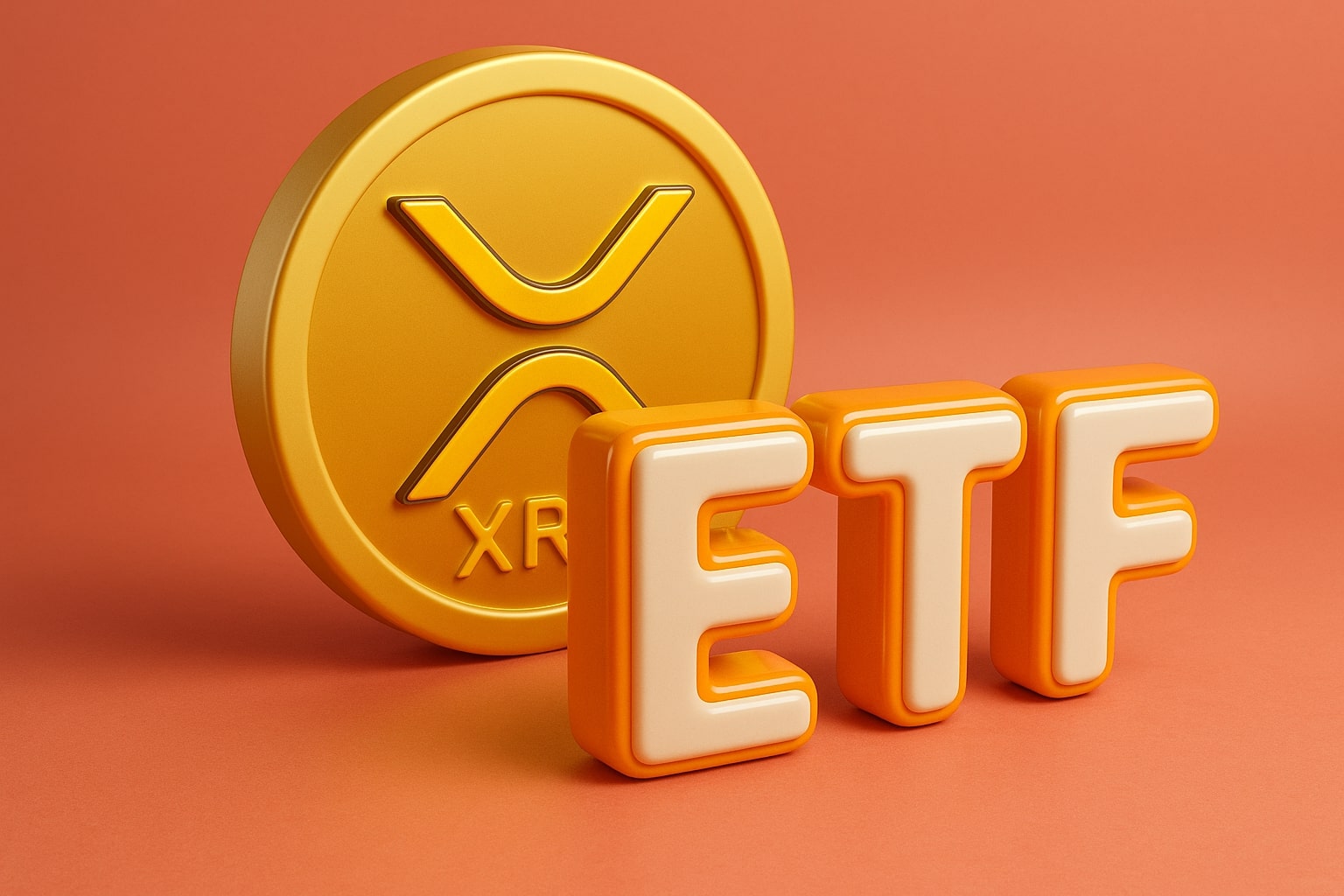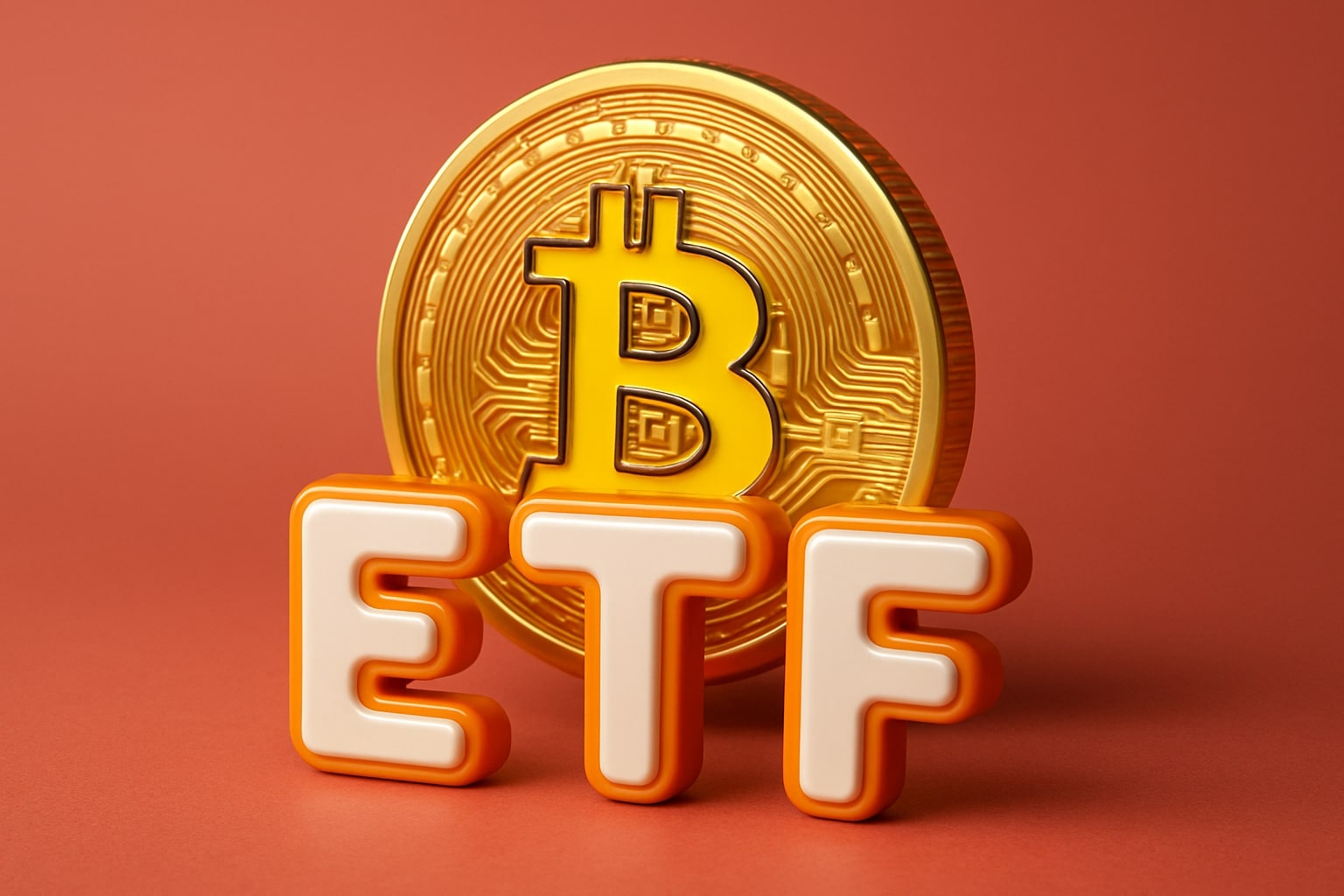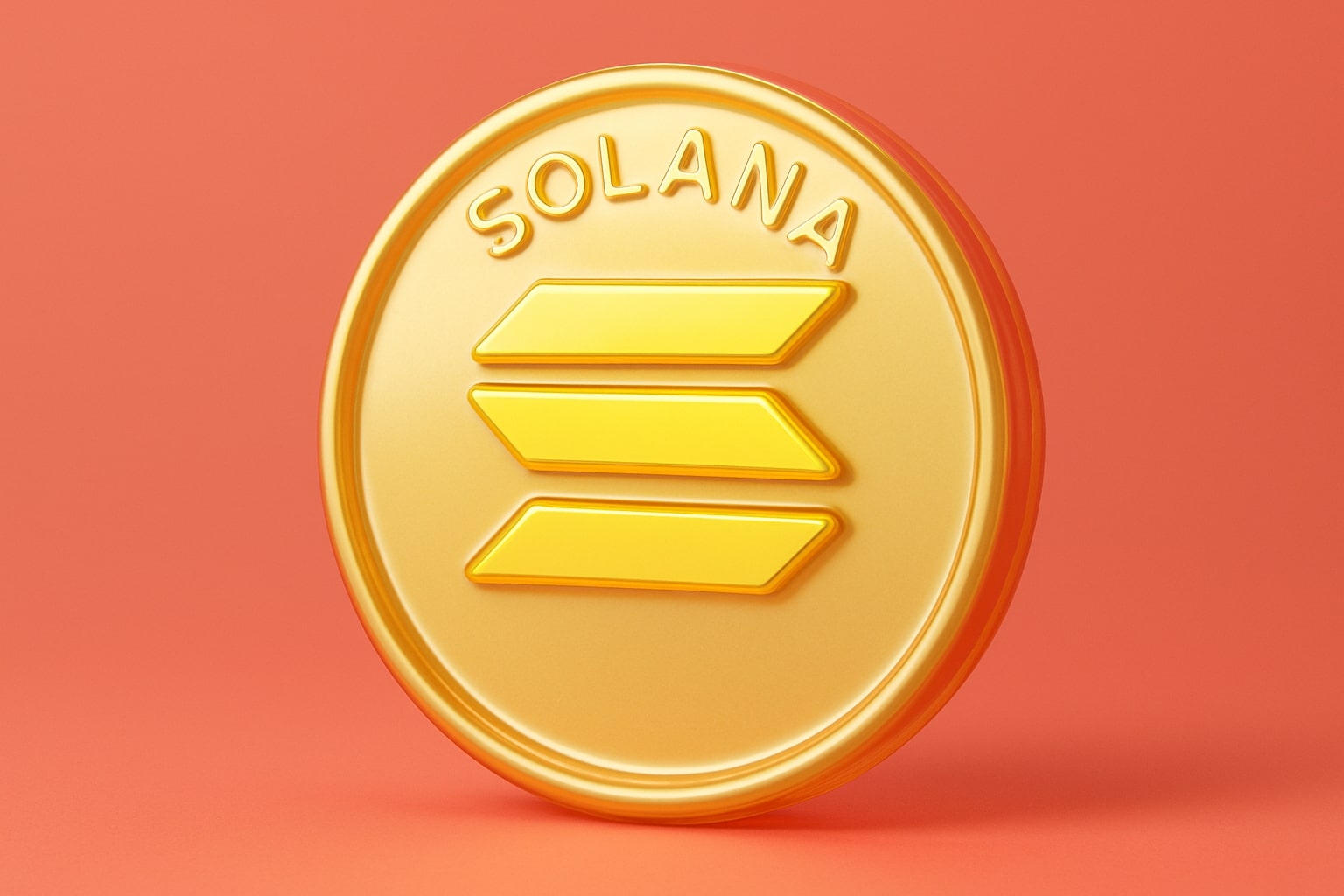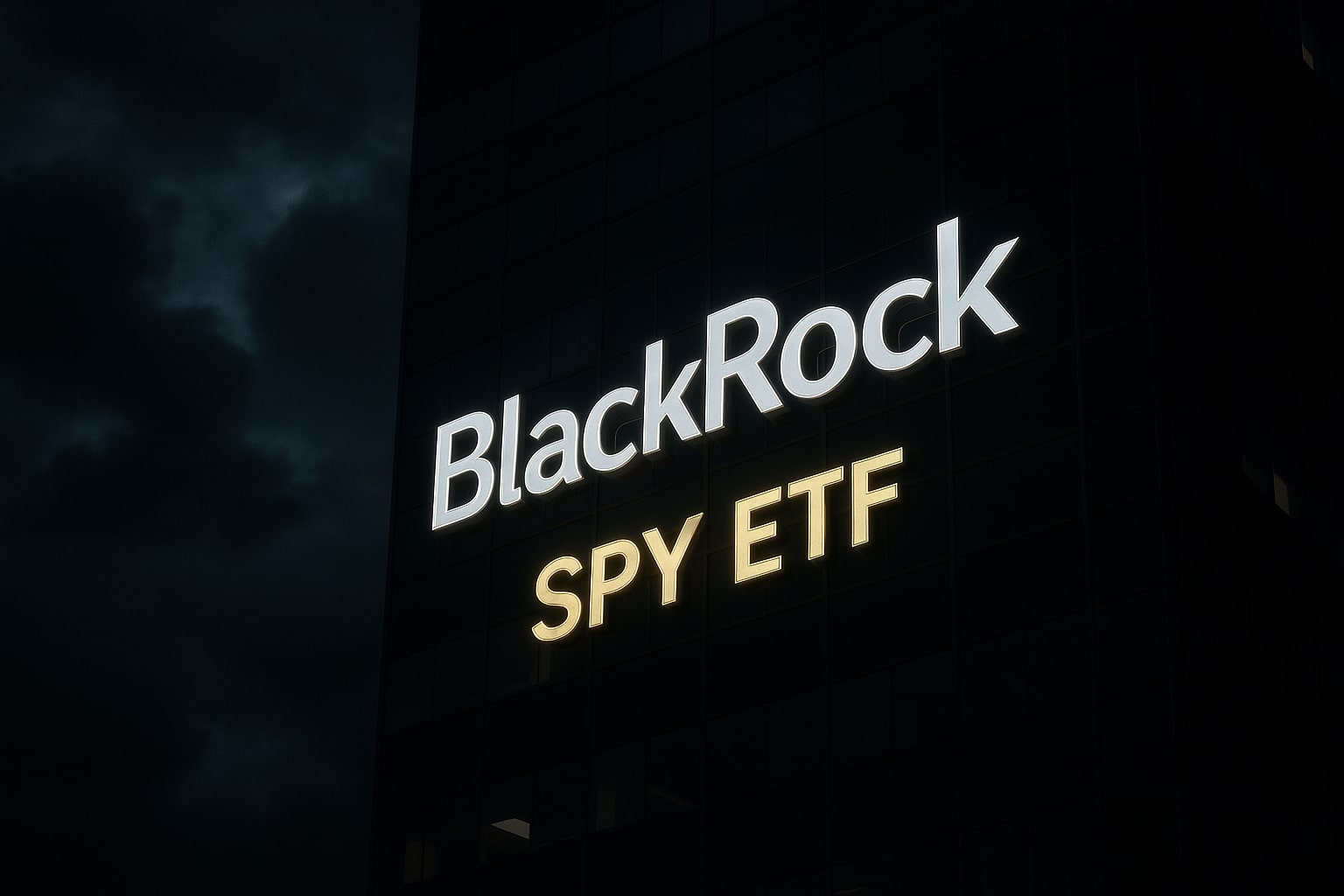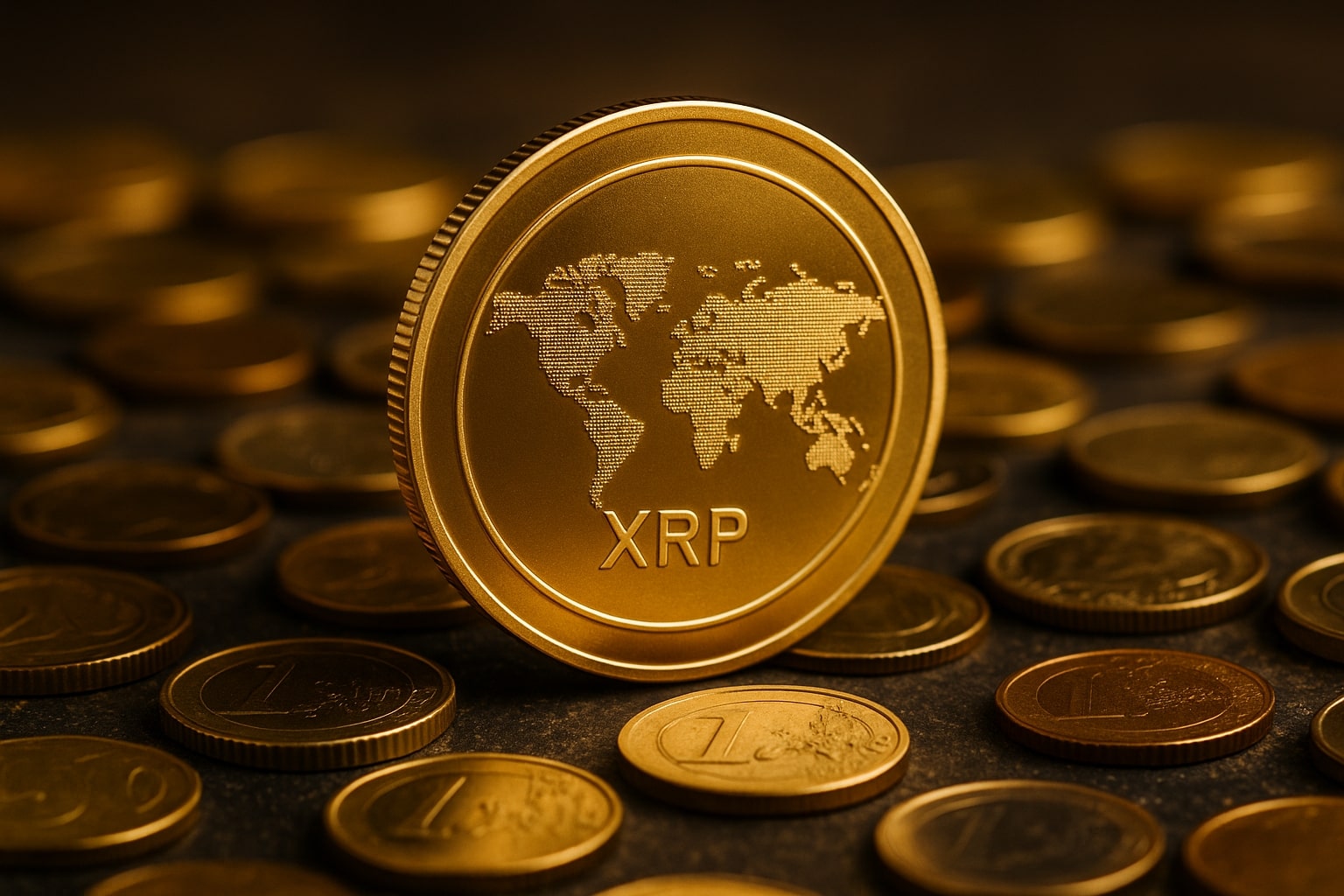
XRP Price Stalls at $2.15: Breakdown to $1.06 or XRP ETF Revival?
Ripple’s XRP faces a brutal selloff, but is the $1.06 realized price the next stop—or could Circle, Coinbase, and Saudi inflows flip the script? | That's TradingNEWS
Heavy distribution and network decline pull XRP-USD below trend
Ripple’s XRP price is unraveling under layered technical and on-chain stress. Trading at $2.15, XRP is now 18% off its May high of $2.65, and chart signals show a decisive shift in market structure. The daily chart now reflects a completed inverted V-shaped formation, a bearish reversal pattern that suggests further losses toward $1.70–$1.72, aligning with the base neckline. Sellers have already exploited the breakdown from a 62% rally that peaked in mid-May, rejecting the $2.65 ceiling with aggressive profit-taking.
Daily RSI momentum confirms this trend: from a high of 68, RSI collapsed to 41 as of June 2—marking a 39.7% drop in strength over just three weeks. This steep decline in relative strength despite price stabilization is a red flag. Weak hands are leaving, and stronger resistance is forming between $2.50 and $2.65, which bulls have now failed to conquer three times in the last six months.
XRP network usage collapses: Daily active addresses down 94%
A worrying confirmation of XRP’s fading momentum comes from its underlying network activity. According to Glassnode data, daily active addresses (DAAs) on the XRP Ledger have plunged from 608,000 in March to just 31,200 in early June—a collapse of 94.9%. That level of transactional abandonment suggests more than temporary user fatigue; it signals structural disinterest in the asset’s current use case.
The same applies to new addresses, which have collapsed from 15,800 daily to only 4,400, showing that retail onboarding is evaporating. XRP’s transactional demand has essentially fallen off a cliff, and this frequently precedes price stagnation or more violent corrections.
With lower activity, on-chain liquidity dries up. Fewer buyers mean weaker support on sell-offs, as visible in the recent failure to hold $2.07, a level that had served as horizontal support since April.
Descending triangle confirms trend exhaustion with $1.25 downside
Price structure has also shifted to a descending triangle—a setup that follows market tops and typically resolves downward. The failure to hold above $2.07 confirms a breakdown. Sellers are now targeting $1.25, which sits below even the neckline of the inverted V-shaped breakdown. Volume is drying up and RSI remains below 40, giving bears the upper hand for the first time since March.
This triangle structure trapped late buyers who mistook the prior bounce toward $2.65 as the start of a breakout. Instead, the failed retest at resistance combined with dropping volume has created a classic bull trap. Trend exhaustion is now visible across multiple timeframes, with rising prices on the daily met by falling RSI on the weekly.
Between November 2024 and June 2025, XRP made higher lows on price—but weekly RSI dropped from 92 to 51, creating a pronounced bearish divergence. This divergence now serves as a warning sign: bulls are weakening, and distribution is replacing accumulation.
Long-term holder sentiment enters denial zone, mirroring 2021 and 2022 tops
Glassnode’s Net Unrealized Profit/Loss (NUPL) chart confirms what price action already telegraphed: XRP holders have entered the “Denial” phase. This psychological zone has historically marked cycle tops for the asset, such as in early 2021 and mid-2022. In both of those periods, denial gave way to capitulation as price fell back toward the realized price.
That same pattern is now playing out. XRP’s realized price—the average price at which all XRP in circulation was last moved—is $1.06. If history repeats, XRP could bleed toward that fair value level, a 50%+ drop from current prices.
Green zone transitions on the NUPL typically follow greed phases and represent widespread disbelief among holders that the rally is over. Once selling pressure accelerates, however, these zones have consistently led to price drawdowns of 40–60%.
Ripple's recent 130 million XRP transfer sparks speculation
The bearish setup is compounded by a series of massive XRP transfers by Ripple itself. 130 million XRP, valued at approximately $283 million, was moved across wallets, including a single 109 million XRP transaction to wallet “DJoAys.” Prior wallet behavior suggests links to Ripple insiders, possibly co-founder Chris Larsen.
These transfers rattled investor confidence, especially given the historical pattern of large token movements preceding price dips. The market interpreted it as strategic unloading or treasury maneuvering, and XRP promptly dropped 1.12% to $2.156 on the same day.
The timing aligns with previous selloffs in December 2024, where large wallet activity foreshadowed 12%–18% corrections. The likelihood of market manipulation becomes hard to ignore when such transactions precede directional moves by hours, not days.
Despite short-term pressure, institutional backing builds long-term case
There’s a clear bifurcation between technical weakness and longer-term structural strength. Ripple’s recent acquisition of Circle, issuer of the USDC stablecoin, represents a major institutional step. This brings Ripple closer to the stablecoin economy and gives XRP indirect access to new liquidity rails. Furthermore, the XRPI XRP Futures ETF now live through Volatility Shares opens regulated exposure for traditional investors—an access point that didn’t exist during the last cycle.
Adding fuel, Coinbase is launching 24/7 XRP futures trading on June 13, with contracts sized at 10,000 XRP and USD-cash settlement. This move opens the door to enhanced institutional liquidity and derivatives market maturity.
Meanwhile, VivoPower, a Nasdaq-listed sustainable energy company, announced plans to allocate $121 million into XRP as part of a Saudi-backed treasury initiative. Their board now includes former SBI Ripple Asia executive Adam Traidman, further cementing Ripple’s institutional alliances.
These developments suggest that, despite short-term pain, XRP’s status as a blockchain-backed liquidity asset for real-world transactions is only getting stronger.
XRP technology push targets legacy payment friction
Ripple continues to spotlight the inefficiencies of SWIFT and traditional bank infrastructure. Their latest releases show that XRP-backed solutions like Ripple Payments can replace human error-prone wire transfers with blockchain-backed settlement—reducing transaction failure rates and cutting costs by 30–60% in institutional pilots.
This gives XRP fundamental utility at a time when most tokens are struggling to define any real-world function.
Still, the market isn’t currently pricing this long-term vision. Traders remain hyper-focused on price levels, RSI, triangle patterns, and wallet movements—not the eventual use case narrative.
Verdict: XRP-USD is a Hold with 30–50% downside risk near term
The current setup around XRP-USD demands caution. Technically, it’s broken: price has failed to reclaim resistance, RSI divergence is intensifying, and on-chain metrics show demand collapse. The risk of a drop toward $1.70, and potentially even $1.25 or the $1.06 realized price, remains high—representing 30–50% downside from $2.15.
However, institutional signals suggest Ripple is building something durable. A spot XRP ETF remains possible in the next 12 months, and the Circle acquisition could unlock new liquidity pipes. Coinbase futures trading will deepen access and may spark a volatility burst in June.
For now, XRP-USD is a Hold. Short-term traders face high volatility risk to the downside. Long-term investors must weigh whether utility and institutional adoption can outweigh the collapse in current network engagement.
If XRP breaks back above $2.65 with volume, the trend changes. Until then, Hold—and watch for a retest of $1.70, $1.25, or even $1.06 before considering new entries.
That's TradingNEWS
Read More
-
S&P 500 SPY ETF (NYSEARCA:SPY) Holds $667 as AI Spending Surge Counters Weak Labor Momentum
07.11.2025 · TradingNEWS ArchiveStocks
-
Ripple’s XRP ETFs soar — XRPR up 6.41% to $19.27 and XRPI up 7.34% to $13.89
07.11.2025 · TradingNEWS ArchiveCrypto
-
Natural Gas Price Forecast - NG=F Steadies at $4.33 as 110.1 Bcf/day Output and Cold Front Shape Price Outlook
07.11.2025 · TradingNEWS ArchiveCommodities
-
USD/JPY Price Forecast - Dollar to Yen Pulls Back to 152.85 as 153K U.S. Job Cuts
07.11.2025 · TradingNEWS ArchiveForex














